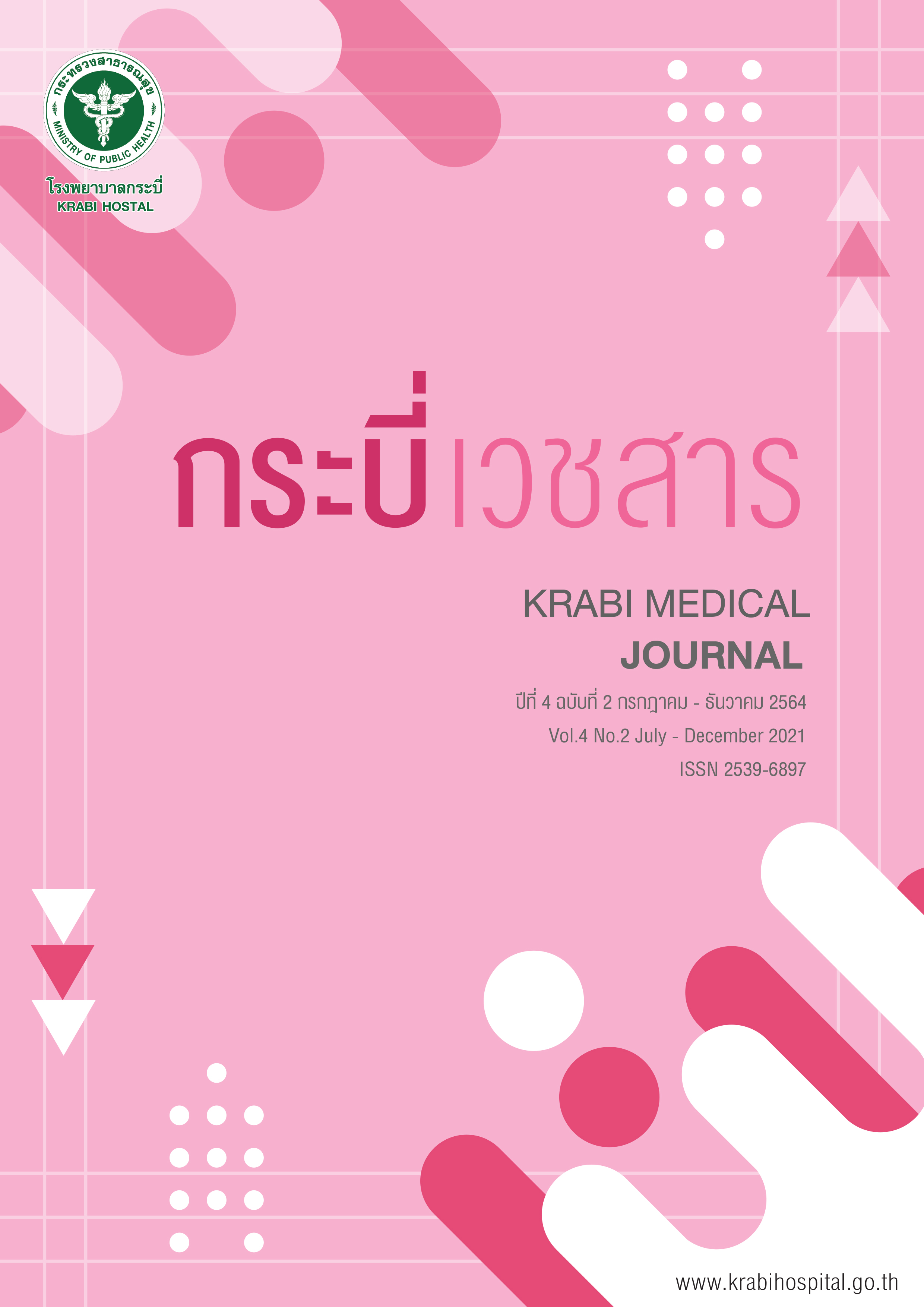Orthognathic surgery in skeletal Class II patient
Main Article Content
Abstract
This case report showed the outcome of surgical orthodontic treatment in non- growing patient with skeletal Class II malocclusion and prognathic maxilla. Le Fort I maxillary superior reposition and setback, and chin genioplasty were planned to eliminate the etiology of jaw discrepancy and malocclusion. Presurgical orthodontic treatment was performed with non-extraction, aligned and leveled tooth malalignment and flatted curve of Spee. Postsurgical orthodontic treatment was to consolidate residual spaces and to create proper space for dental substitutes. A total treatment time was 31 months. At the end of treatment, skeletal Class I orthognahic maxilla and mandible, canine and molar Class I was accomplished. Gummy smile was corrected and soft tissue profile has improved dramatically. Moreover, the edentulous areas of both arches were placed by dental prostheses.
Article Details

This work is licensed under a Creative Commons Attribution-NonCommercial-NoDerivatives 4.0 International License.
บทความนิพนธ์ต้นฉบับจะต้องผ่านการพิจารณาโดยผู้ทรงคุณวุฒิที่เชี่ยวชาญอย่างน้อย 2 ท่าน แบบผู้ทรงคุณวุฒิ และผู้แต่งไม่ทราบชื่อกันและกัน (double-blind review) และการตีพิมพ์บทความซ้ำต้องได้รับการอนุญาตจากกองบรรณาธิการเป็นลายลักษณ์อักษร
ลิขสิทธิ์
ห้ามนำข้อความทั้งหมดหรือบางส่วนไปพิมพ์ เว้นว่าได้รับอนุญาตจากโรงพยาบาลเป็นลายลักษณ์อักษร
ความรับผิดชอบ
เนื้อหาต้นฉบับที่ปรากฏในวารสารเป็นความรับผิดชอบของผู้เขียน ทั้งนี้ไม่รวมความผิดพลาดอันเกิดจากเทคนิคการพิมพ์
References
Shaughnessy T, Shire LH. Special Report-Etiology of Class II Discrepancies. Pediatric Dentistry.1988; 10(4):336-7.
McNamara JA, Jr. Components of class II malocclusion in children 8-10 years of age. Angle Orthod. 1981; 51(3)177-202.
Proffit WR, Ackerman JL. Diagnosis and treatment planning, in Graber M, Varnasdall RL Jr(eds): Orthodontics: Current Principals and Treatment. St Louis, MO, Mosby, 1994.
Proffit WR, Phillips C. A comparison of outcomes of orthodontic and surgical-orthodontic treatment of class II malocclusion in adults. Am J Orthod Dentofacial Orthop. 1992; 101(6): 556-65.
Myron RT. Orthognathic surgery versus orthodontic camouflage in treatment of mandibular deficiency. J Oral Maxillofac Surg. 1995; 53: 572-8.
Pancherz H. Dentofacial orthopedics or orthognathic surgery: Is it matter of age? Am J Orthod Dentofacial Orthop. 2004; 126(3): 273-7.
Larsen MK. Indication for orthognathic Surgery- A review. J Contemp Dent Pract. 2012; 16(1): 1-13.
Raposo R, Peleteiro B. Orthodontic camouflage versus orthodontic-orthognathic surgical treatment in class II malocclusion: a systematic review and meta-analysis. Int J Oral Maxillofac Surg. 2018; 47: 445-55.
Proffit WR. Combine Surgical and orthodontic treatment: Contemporary Orthodontics. 4th ed. St.Louis: Mosby; 2019.
Raymon J. Fonseca. Orthoganthic surgery Esthetic surgery Cleft and craniofacial surgery: Oral and maxillofacial surgery. 3rd ed. St.Louis: Elsevier; 2018.
Muradin MSM, Rosenber A. Bilt A, Stolen PJW, The effect of alar cinch sutures and V-Y closure of soft tisuuse dynamics after Le Fort I intrusion osteotomies. J Craniomaxillofac Surg. 2009; 37(6): 334-40.
Bailey JL, Cevidanes SL. Stability and predictability of orthognathic surgery. Am J Orthod Dentofacial Orthop. 2000; 117(3): 571-4.
Torgersbraten N, Stenvik A. Bimaxillary surgery to correct high-angle class II malocclusion: does a simultaneous genioplasty affect long-term stability? Eur J Orthod. 2020; 42(3): 426-433.
Ewing M, Ross RB. Soft tissue response to mandibular advancement and genioplasty. Am J Orthod Dentofacial Orthop. 1992; 101(6): 550-5.
Brammer J, Finn R. Stabilty after bimaxillary surgery to correct vertical maxillary excess and mandibular deficiency. J Oral Surg. 1980; 38(9): 664-70
Proffit WR, Turvey TA. Orthognathic surgery: a hierarchy of stability. Int J Adult Orthod Orthognath Surg. 1996; 11:191-204.
Bishara SE. Textbook of Orthodontics. 1st ed. Philadelphia: W.B. Saunders; 2001.
Little RM. Stability and Relapse of Dental Arch Alignment. Br J Orthod. 1990; 17(3): 235-41.
Graber TM, Vanarsdall RL. Orthodontics Current Principles and Technique. 3 rd ed. Missouri: Mosby; 2000.
Bishara SE, Treder JE, Damon P, Olsen M. Changes in the dental arches and dentition between 25 and 45 years of age. Angle Orthod. 1996; 66(6): 417-22.


